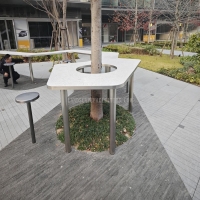Welcome to the website for landscape facilities products and knowledge.
How does the table’s design account for ease of integration with audio-visual equipment?
Contemporary table designs have evolved significantly to accommodate the growing need for seamless audio-visual equipment integration. The fundamental approach involves strategic engineering that addresses both aesthetic appeal and technical functionality. Modern tables incorporate discreet cable management systems with hidden channels and access points that allow wires to remain organized and out of sight. These designs often feature built-in connectivity ports strategically placed for easy access while maintaining a clean appearance.
Many professional-grade tables now include integrated power solutions with multiple outlets and USB ports conveniently embedded within the table's surface or side panels. This eliminates the need for external power strips and reduces cable clutter. The structural design also considers equipment weight distribution, with reinforced sections capable of supporting heavy monitors, speakers, and other AV components without compromising stability.
Table height and viewing angles are carefully calculated to ensure optimal screen visibility and speaker placement. Some designs incorporate retractable monitor arms and adjustable shelves that can be concealed when not in use. The materials selected for these tables often account for acoustic properties, using sound-absorbing surfaces to minimize audio distortion while providing durable surfaces that can withstand regular equipment adjustments.
Manufacturers are increasingly implementing modular designs that allow for custom configurations based on specific AV requirements. These tables may feature removable panels for equipment access, ventilation systems to prevent overheating, and dedicated compartments for various media devices. The integration of wireless technology further enhances the clean aesthetic by reducing physical connections while maintaining full functionality.
The thoughtful incorporation of these elements demonstrates how furniture design has adapted to technological advancements, creating workspaces where technology and furniture coexist harmoniously. This approach ensures that audio-visual equipment enhances rather than detracts from the environment's overall design and functionality.
Related search:

Recommendation
An outdoor bar counter with stainless steel and terrazzo materials in an irregular shape